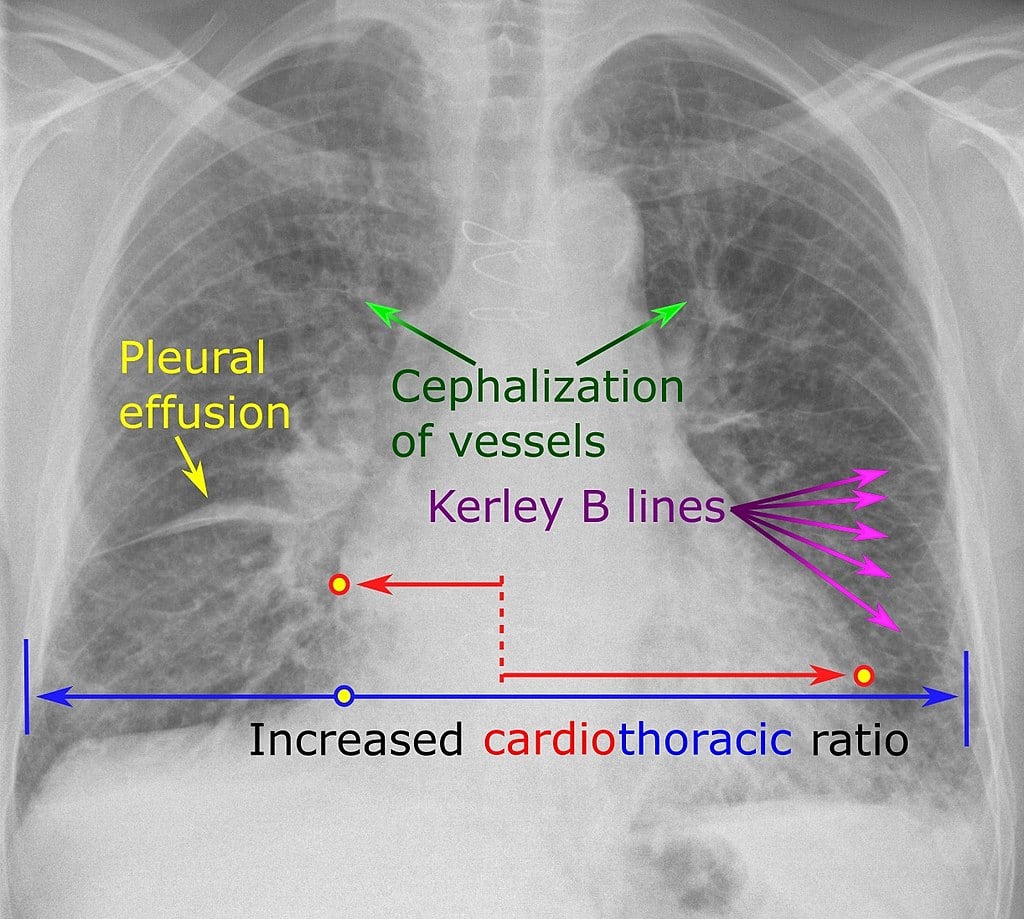Heart failure or cardiac failure is the inability of the heart to maintain an adequate cardiac output that maintains the metabolic needs of the body. It may be systolic, diastolic, left ventricular, right ventricular or bi-ventricular, acute or chronic. Failure of normal pumping ability of the ventricle is called systolic failure and presents with reduced ejection fraction (<40%). On the other hand, impaired ventricular relaxation or filling due to increase in wall stiffness causes diastolic dysfunction. Ejection fraction is preserved in diastolic dysfunction, although it will present with increase in filling pressures. Congestive heart failure is heart failure with pulmonary and/or systemic congestion and can be seen in LHF/RHF or biventricular failure.

I) Left-sided heart failure (LHF): Systolic dysfunction of the left ventricle from impaired ventricular contractility can be due to AMI, CAD, volume overload from MR or AR,dilated cardiomyopathy etc. Systolic dysfunction can also result from increased afterload due to systemic hypertension or aortic stenosis. Diastolic dysfunction of LV can be due to impaired relaxation due to LVH, HOCM or restrictive cardiomyopathy, CAD or it may result from impaired ventricular filling from MS, cardiac tamponade or constrictive pericarditis. LHF causes accumulation of fluid buildup in the lungs causing pulmonary edema and systemic hypoperfusion.
II) Right-sided heart failure (RHF): Systolic dysfunction of RV may result from increased afterload from pulmonary HT, COPD, PE, ILD, ARDS or pulmonic stenosis. Impaired contractility of RV can result from AMI, volume overload from TR or PR and dilated cardiomyopathy. Diastolic dysfunction of RV can result from causes such as tricuspid stenosis plus pathologies similar to those causing diastolic dysfunction of LV like tamponade etc. The most common cause of RV failure is LV failure. RHF causes fluid buildup in the systemic and portal venous system presenting as peripheral pitting edema and hepatic congestion.

S3 and S4 can be auscultated. S3 is due to abnormal filling of blood into an already volume overloaded ventricle. S4 is due to forceful atrial contraction against a stiff ventricle and is seen in diastolic dysfunction such as LVH or RVH.
Sign up for free to take 2 quiz questions on this topic